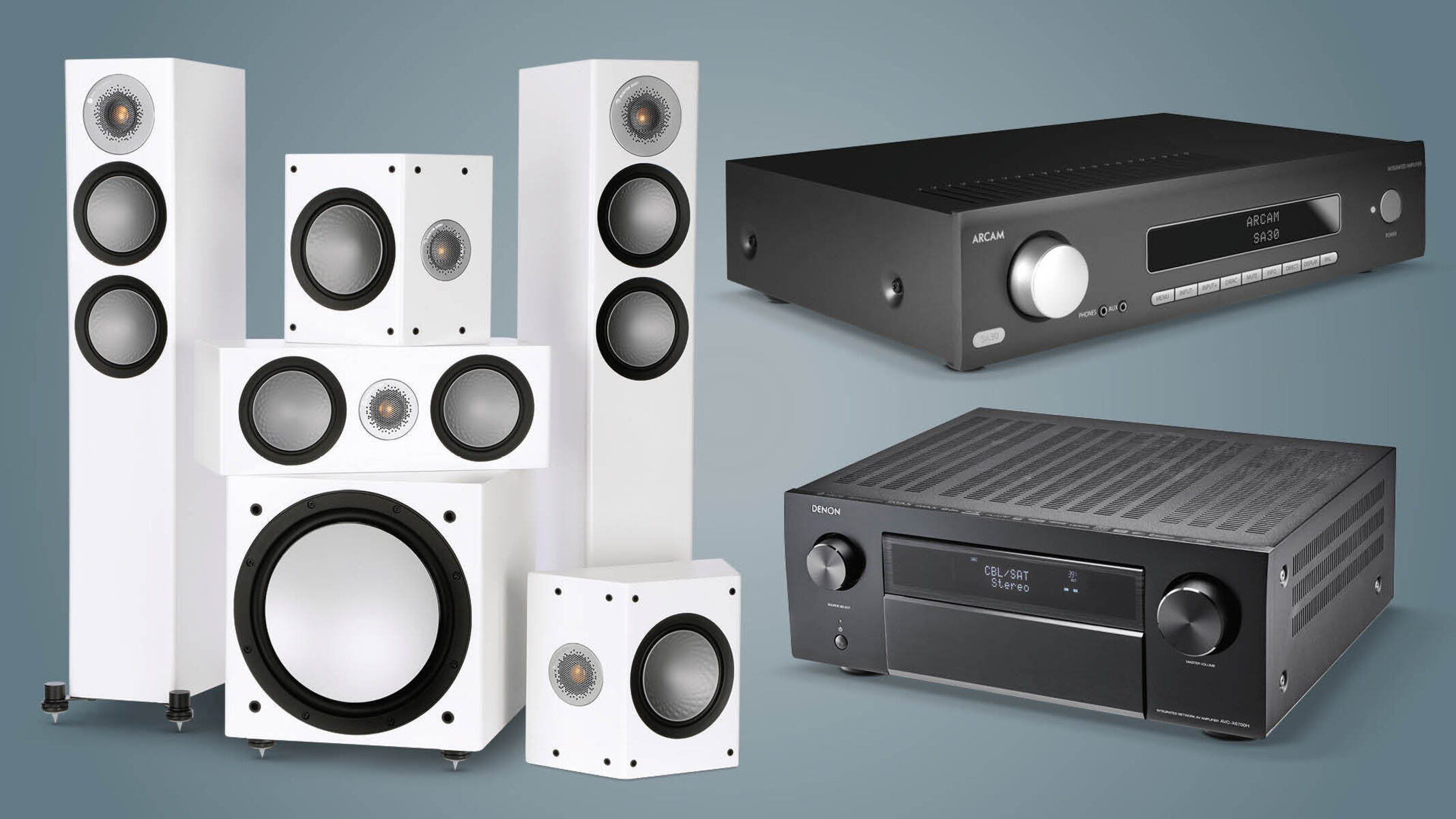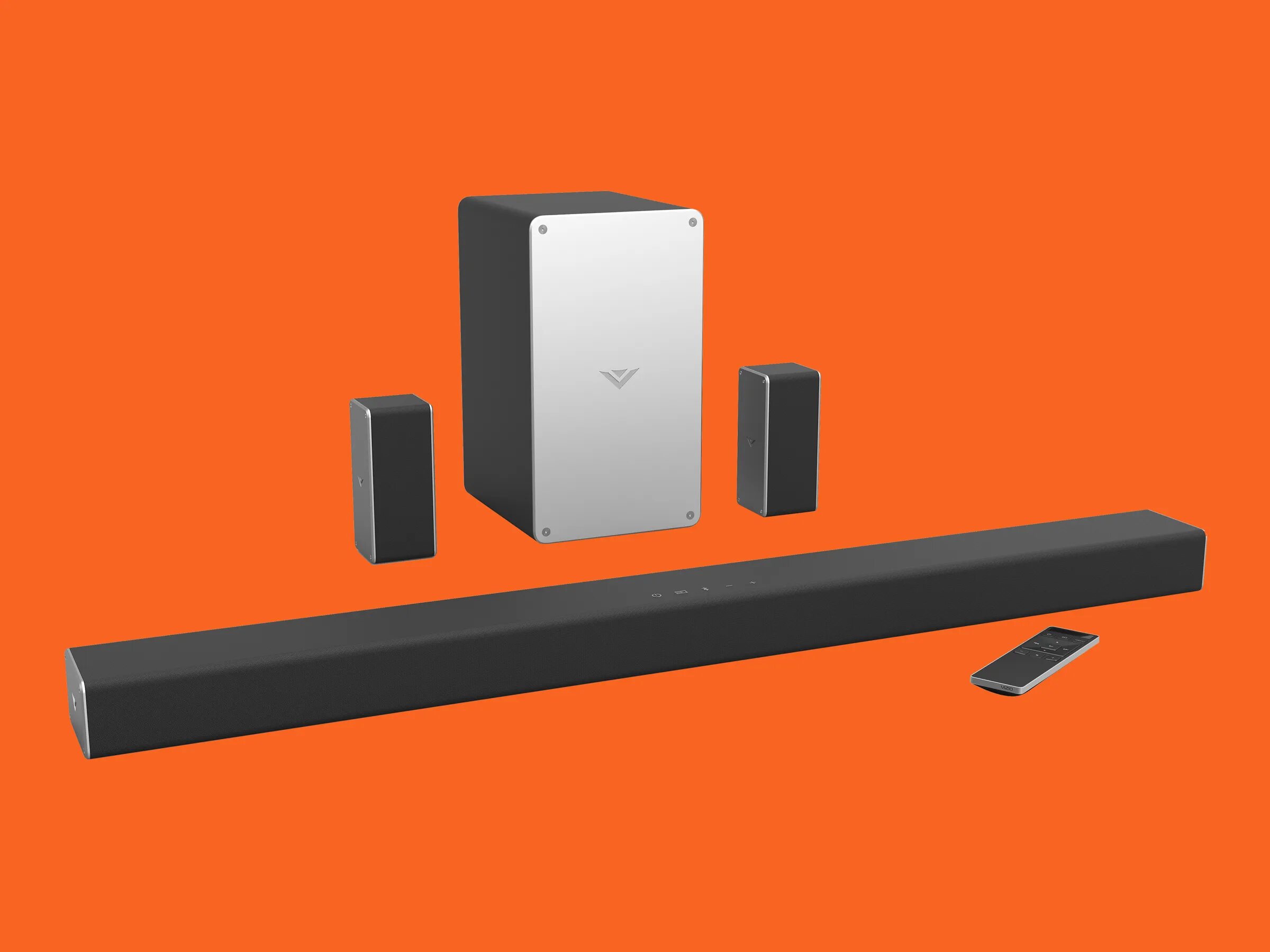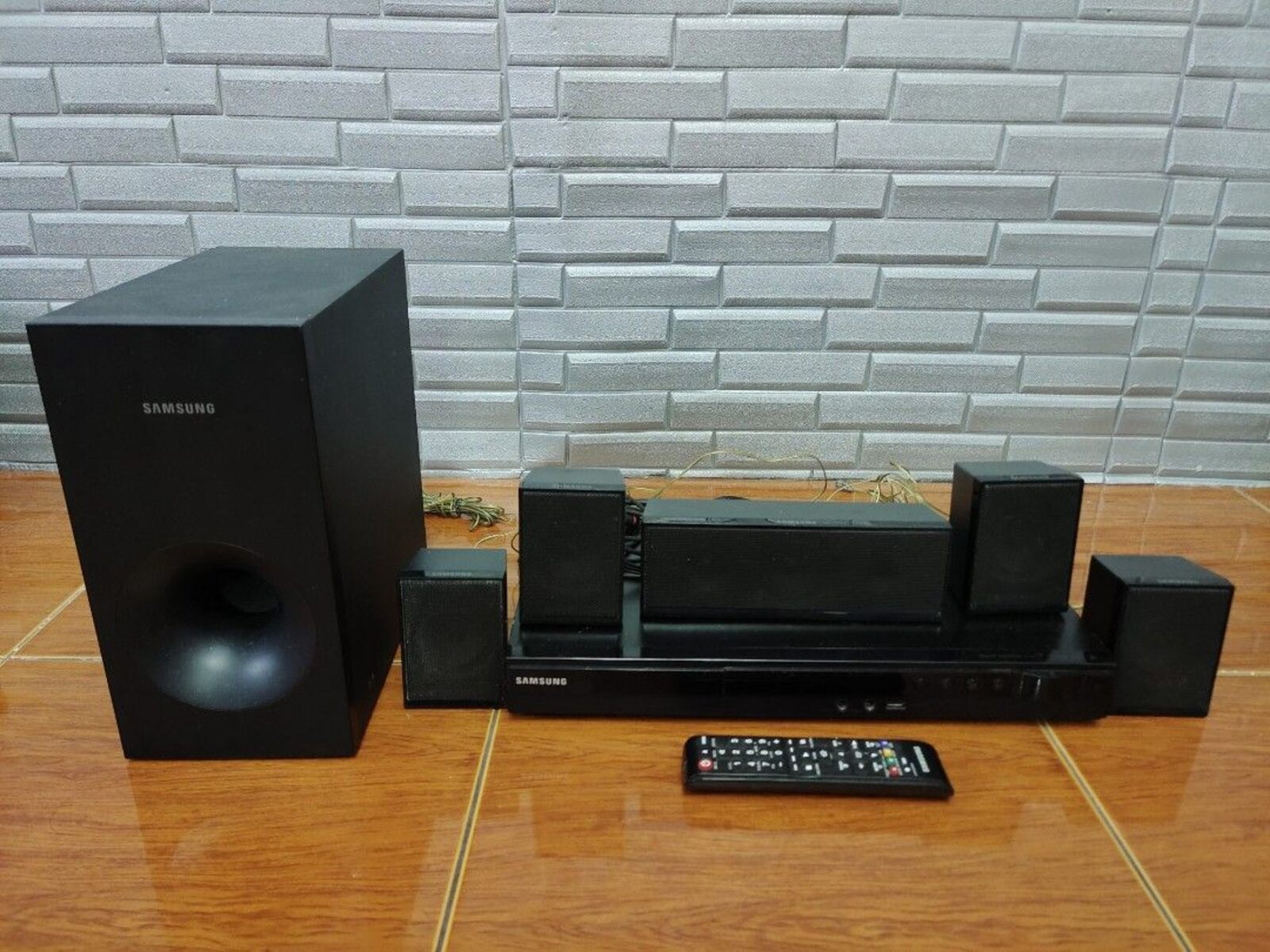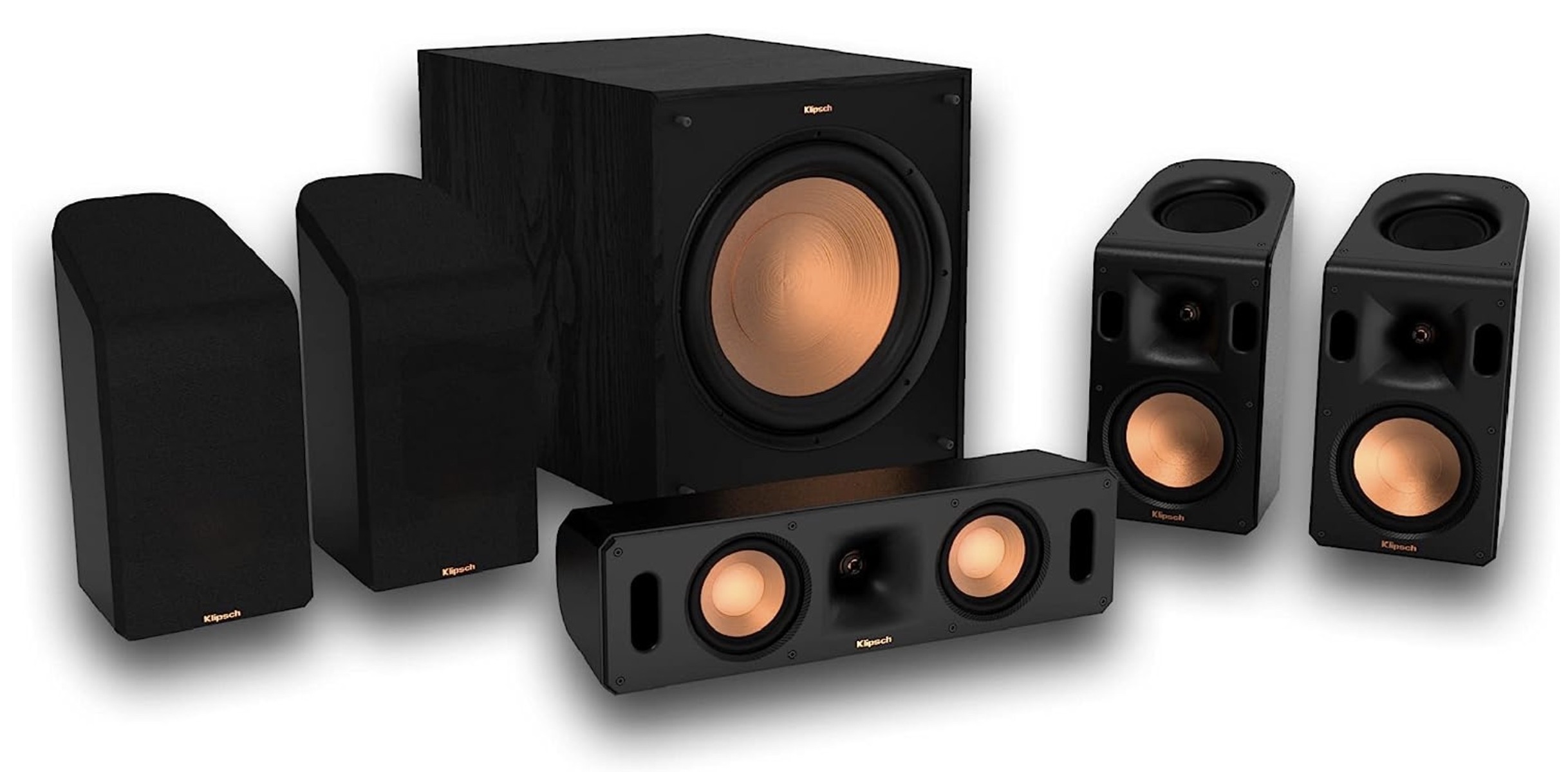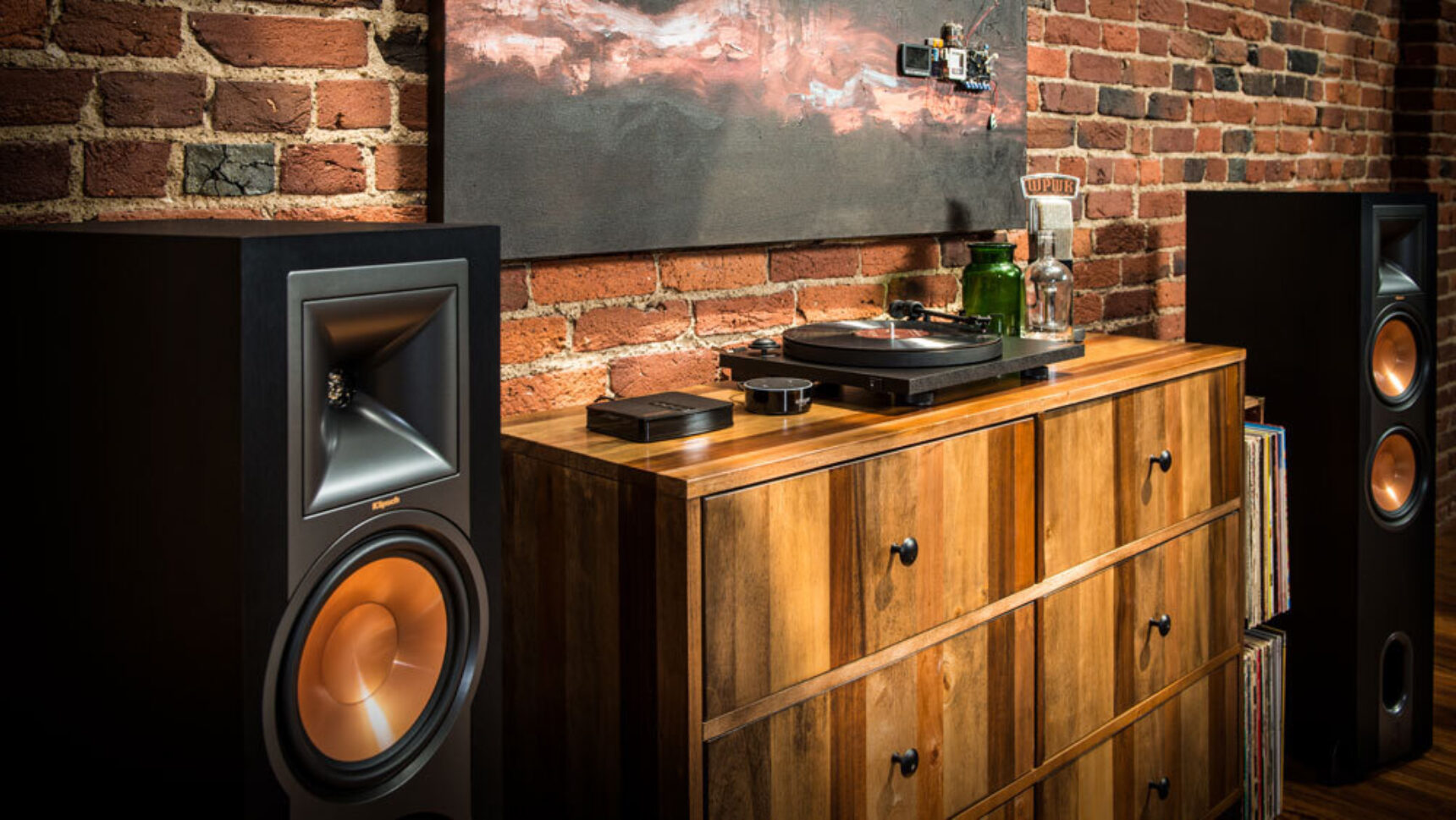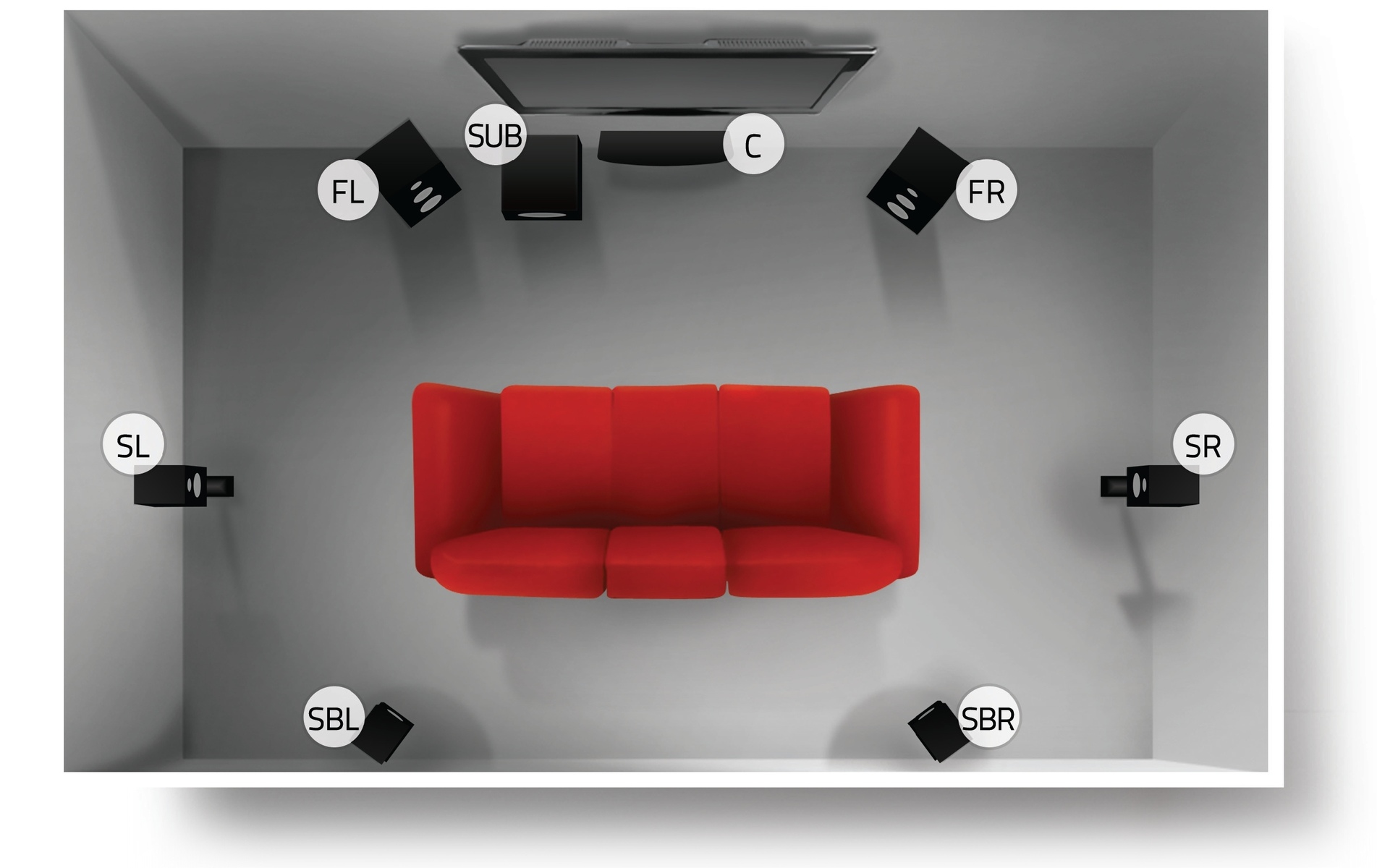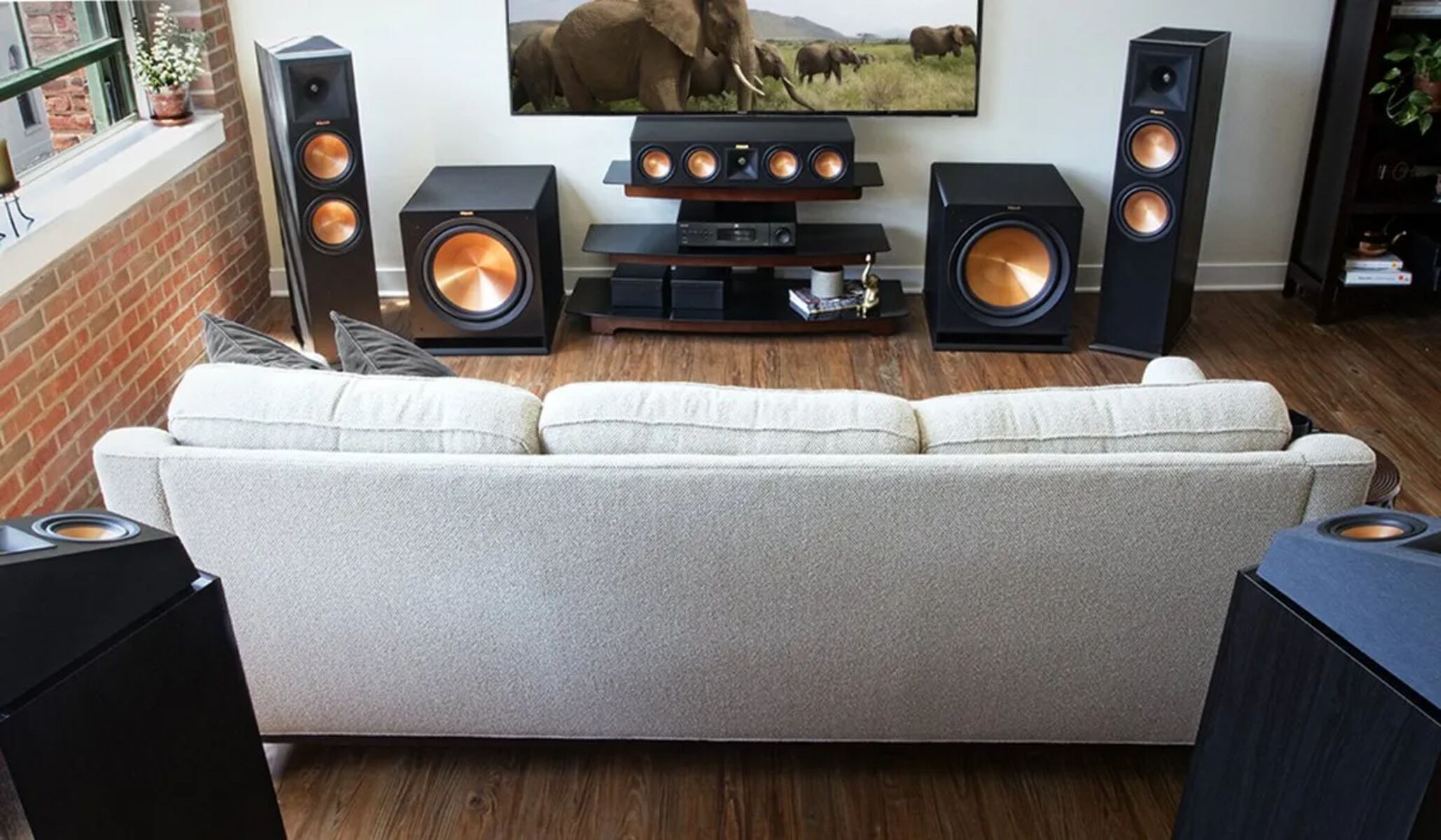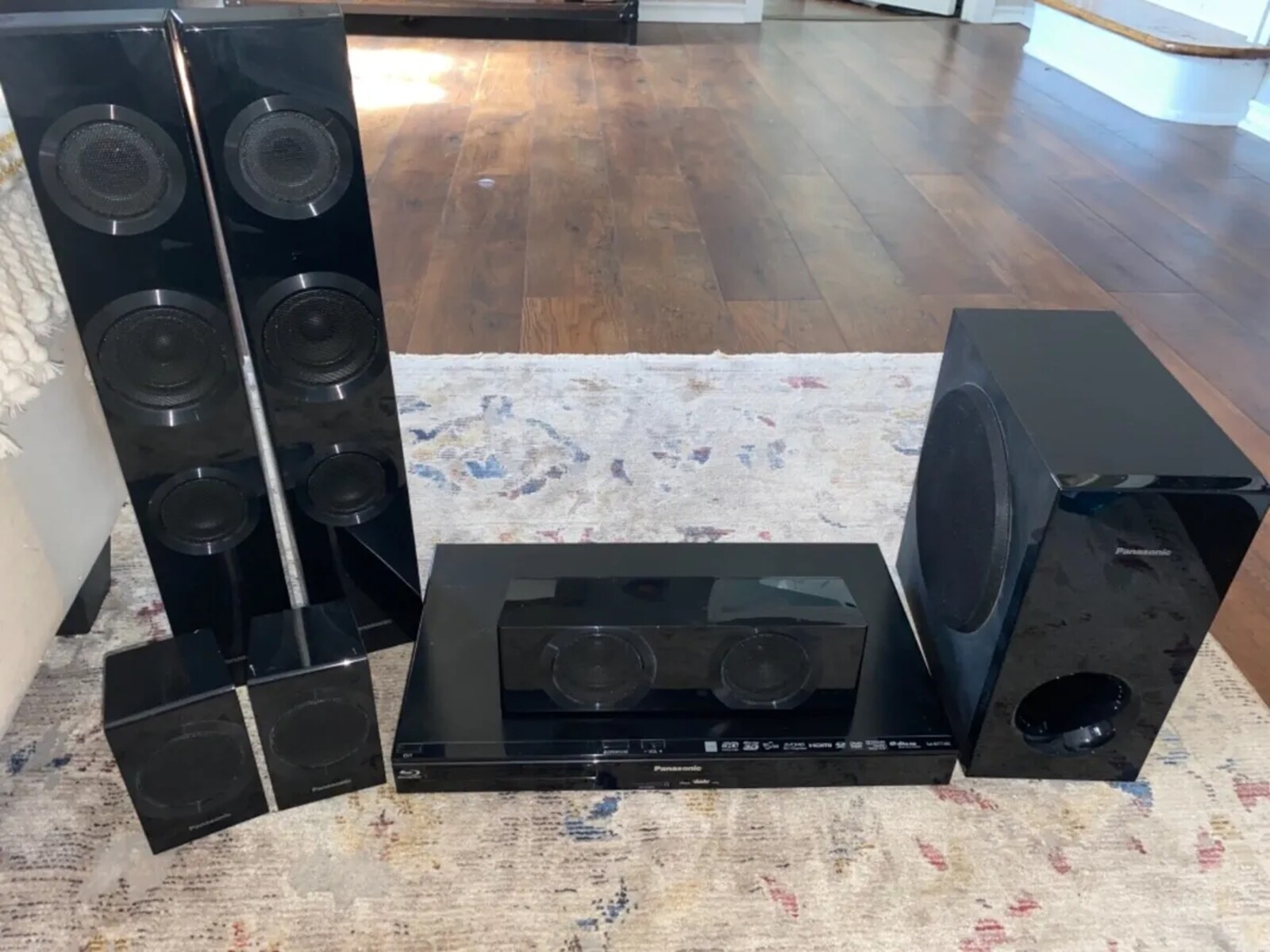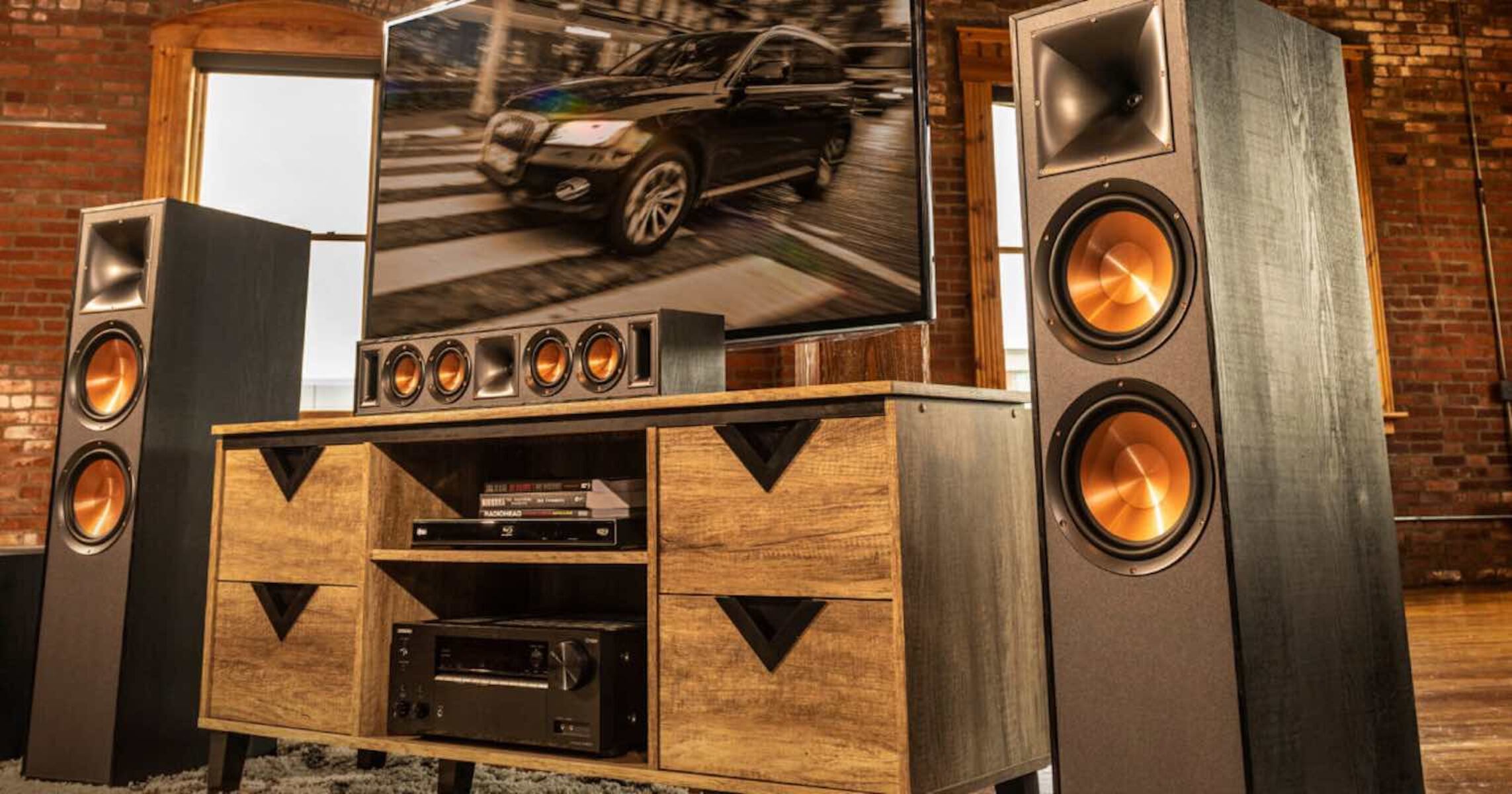Introduction
Welcome to the world of surround sound systems, where every movie, song, or video game comes alive with immersive audio. When setting up a surround sound system, one of the key components that can make a significant difference in your listening experience is the placement of the subwoofer.
The subwoofer is responsible for reproducing low-frequency sounds and adding depth and impact to the overall audio. Finding the perfect spot for your subwoofer can greatly enhance the bass response and ensure that you get the most out of your surround sound system.
However, determining the ideal location for your subwoofer can sometimes be a challenging task. Factors such as room size, furniture placement, and personal preference can all come into play. In this article, we will discuss the importance of subwoofer placement, factors to consider when deciding on a location, and some ideal placements for subwoofers in a surround sound setup.
Whether you’re a home theater enthusiast or simply someone who enjoys high-quality audio, understanding where to place your subwoofer is crucial for achieving optimal sound quality. So, let’s dive in and explore the various options available to you!
Importance of Subwoofer Placement
Proper subwoofer placement is more than just a matter of convenience; it plays a crucial role in achieving the best audio performance from your surround sound system. Here are a few reasons why subwoofer placement is important:
1. Bass response: The placement of the subwoofer can significantly impact the bass response in your room. A well-placed subwoofer can provide a balanced low-frequency sound that is rich and immersive. On the other hand, a poorly placed subwoofer can result in uneven bass distribution, causing certain frequencies to be overly emphasized or weak.
2. Localization: The goal of a surround sound system is to create a seamless audio experience where sound sources appear to come from specific locations within the room. When the subwoofer is properly placed, it helps blend the low-frequency effects with the rest of the audio, making it difficult for listeners to pinpoint the source of the bass. This enhances the overall immersion and realism of the audio.
3. Reduced distortion: Placing the subwoofer in an optimal position can help minimize distortion and unwanted resonances. When the subwoofer is too close to a wall or corner, it can cause excessive boominess or muddiness in the bass response. By finding the right placement, you can achieve a cleaner and more accurate bass output.
4. Consistent frequency response: In a well-designed surround sound system, all speakers should produce an even frequency response throughout the listening area. This includes the subwoofer. Proper placement helps to achieve consistent bass performance across multiple listening positions, ensuring that everyone in the room enjoys a balanced audio experience.
By considering the importance of subwoofer placement and taking the time to find the optimal position, you can greatly enhance your listening experience and enjoy the full potential of your surround sound system. Now, let’s explore the factors to consider when deciding on the placement of your subwoofer.
Factors to Consider
When choosing the placement for your subwoofer, there are several important factors to keep in mind. Consider the following:
1. Room size: The size of your room plays a significant role in determining the ideal placement for your subwoofer. Larger rooms may require multiple subwoofers to achieve even bass distribution, while smaller rooms may only need one strategically placed subwoofer. Take into account the dimensions and layout of your room to optimize the placement.
2. Room acoustics: The acoustic properties of your room, such as wall materials, flooring, and furniture, can impact the way sound is reflected and absorbed. Hard surfaces can cause sound to bounce around, leading to reverberation and uneven bass response. Soft furnishings and acoustic treatments can help improve the acoustics and minimize unwanted reflections.
3. Listening position: Consider where you usually sit or stand when enjoying your surround sound system. Ideally, the subwoofer should be placed in a position that optimizes the bass response at your preferred listening spot. Experiment with different placements to find the sweet spot where you experience the most balanced and impactful bass.
4. Speaker placement: The position of your main speakers should also be taken into account when deciding on the subwoofer placement. Aim to create a cohesive soundstage, where all speakers work in harmony. Avoid placing the subwoofer too close to the main speakers, as this can result in localization issues or overshadowing of other frequencies.
5. Cable management: It’s essential to plan for proper cable management when placing your subwoofer. Ensure that the cables are routed neatly and kept away from potential tripping hazards. If necessary, invest in cable management solutions, such as cable raceways or wire concealment systems, to maintain a clean and organized setup.
Considering these factors will help you make an informed decision about the placement of your subwoofer. Now, let’s explore some of the ideal placements for subwoofers in a surround sound setup.
Ideal Placements for Subwoofers
When it comes to subwoofer placement, there are a few options to consider. Let’s explore some of the ideal placements for subwoofers in a surround sound setup:
1. Placement Option 1: Front of the Room
Placing the subwoofer in the front of the room is a common and effective choice. This position helps create a cohesive and balanced soundstage, as it allows the bass to blend seamlessly with the sound coming from the main speakers. Ideally, the subwoofer should be centered, either below or above the TV or projection screen, to maintain a symmetrical layout.
2. Placement Option 2: Side of the Room
Another viable option is placing the subwoofer along one of the side walls. This placement can help distribute the bass more evenly throughout the room, especially if the listening area is not centered. The subwoofer should be positioned away from corners and walls to minimize any potential bass buildup. Experiment with different positions to find the spot that delivers the best bass response.
3. Placement Option 3: Back of the Room
In certain room layouts, placing the subwoofer at the back of the room can be an effective choice. This setup allows for a more immersive bass experience, as it creates a sense of depth in the audio. However, be cautious of potential localization issues, as the bass may become too directional when placed at the back. Experimentation and fine-tuning will help achieve the optimal position.
Remember, these are general guidelines, and the best placement for your subwoofer will ultimately depend on your specific room and personal preferences. Take the time to experiment with different positions and listen carefully to the changes in bass response. Trust your ears to determine the optimal placement for your subwoofer.
Now that we’ve explored some ideal placements, let’s discuss some common mistakes to avoid when setting up your subwoofer.
Placement Option 1: Front of the Room
Placing the subwoofer in the front of the room is a popular choice for many surround sound setups. This placement option offers several advantages for achieving a balanced and immersive audio experience.
When placing the subwoofer in the front, it is essential to consider the overall layout of your room. Ideally, the subwoofer should be centered, either below or above your TV or projection screen. This position helps create a symmetrical arrangement, enhancing the visual appeal of your setup.
By positioning the subwoofer in the front, its low-frequency soundwaves blend seamlessly with the audio coming from the main speakers. This integration allows for a cohesive and balanced soundstage, where the bass feels integrated with the rest of the sound. It creates a more immersive audio experience, enhancing the impact of explosions, deep music notes, and other low-frequency effects.
When placing the subwoofer in the front, make sure it is not obstructed by furniture or other objects that could impede the soundwaves. Allow for sufficient space around the subwoofer to prevent any vibration transfer to nearby surfaces. Experiment with different positions within the front area to find the spot that delivers the most accurate and impactful bass response.
Keep in mind that room acoustics can influence the effectiveness of the front placement. If your room has hard surfaces that reflect sound, consider incorporating acoustic treatments such as bass traps or diffusers to reduce unwanted resonances or reverberations.
One thing to be cautious of when placing the subwoofer in the front is potential localization issues. If the subwoofer is too close to the main speakers, it may become noticeable and distract from the immersive surround sound experience. In such cases, you might need to experiment with slight adjustments in subwoofer position or invest in a subwoofer with phase adjustment options to achieve better integration with the main speakers.
Overall, placing the subwoofer in the front of the room is a practical and effective choice for many surround sound setups. It helps create a balanced soundstage, blends the bass with the main speakers, and enhances the overall impact of low-frequency effects. However, it’s important to consider the specific characteristics of your room and make adjustments accordingly to achieve the best possible audio performance.
Placement Option 2: Side of the Room
Another viable placement option for your subwoofer in a surround sound setup is along one of the side walls. This placement can offer unique benefits and cater to specific room layouts and personal preferences.
When placing the subwoofer on the side of the room, it is important to consider the overall sound distribution and balance. The subwoofer should be positioned away from corners and walls to minimize any potential bass buildup or resonance. Experiment with different positions to find the spot that delivers the best bass response and blends well with the main speakers.
One advantage of placing the subwoofer on the side is the potential for more even bass distribution throughout the room. This can be particularly beneficial if your listening area is not centered or if you have multiple seating positions. By strategically positioning the subwoofer on the side, you can achieve a more balanced bass response that reaches all corners of the room.
Remember to take into account the room acoustics when placing the subwoofer on the side. Hard surfaces can cause sound to bounce around, potentially leading to unwanted reflections and a loss of clarity. Consider incorporating acoustic treatments like bass traps or diffusers to help control any acoustic issues and improve the overall sound quality.
Keep in mind that subwoofer placement on the side of the room may require more careful integration with the main speakers. You may need to adjust the phase or crossover settings to ensure a smooth transition between the subwoofer and the main speakers. Take the time to fine-tune the settings and listen for any potential localization issues or overpowering of other frequencies.
This placement option is also suitable if you have limited space in the front of the room or if your room layout does not allow for a centered subwoofer placement. By exploring the side placement option, you can still achieve a satisfying bass performance and a captivating surround sound experience.
Ultimately, the optimal placement of the subwoofer on the side of the room will depend on your specific room characteristics and personal preferences. Experiment with different positions, listen carefully, and make adjustments as needed to achieve the best bass response and integration with the main speakers.
Placement Option 3: Back of the Room
In certain room layouts, placing the subwoofer at the back of the room can be a viable and effective option for your surround sound system. This placement can offer a unique and immersive bass experience, adding depth and dimension to the audio.
When considering placing the subwoofer at the back of the room, it is crucial to take into account the specific characteristics of your room. The subwoofer should be positioned away from any corners and walls to minimize potential bass buildup or resonance. Experiment with different positions to find the spot that delivers the best bass response and blends well with the rest of the audio.
By placing the subwoofer at the back, you can create a sense of depth in the audio. This positioning enhances the spatial atmosphere of movies, music, and games, making the listening experience more immersive. Low-frequency effects and bass notes can feel more impactful when they emanate from behind, adding a new dimension to the surround sound system.
However, it’s essential to be cautious of potential localization issues when placing the subwoofer at the back. The bass sounds can become too directional, leading to a disconnect between the audio and visual cues. Experiment with adjustments in subwoofer position or phase settings to achieve a better integration with the main speakers and minimize any localization distractions.
Additionally, consider the room acoustics when placing the subwoofer at the back. Soft furnishings, rugs, or acoustic panels can help absorb and diffuse sound reflections, preventing unwanted resonances or reverberations that may affect the overall quality of the bass response.
Placement of the subwoofer at the back of the room works well in specific room setups and can enhance the overall surround sound experience. However, it may not be suitable for all environments, especially if the room layout or acoustics do not support this configuration. Be sure to experiment and listen carefully to ensure that the placement at the back indeed enhances the audio and contributes to a more immersive surround sound system.
Remember, the choice of subwoofer placement at the back of the room should be based on your specific room characteristics, preferences, and the desired audio experience. Take the time to fine-tune the setup, listen carefully, and make adjustments as needed to achieve the optimal bass response and overall audio performance.
Common Mistakes to Avoid
When setting up your subwoofer in a surround sound system, there are a few common mistakes that are important to avoid. These mistakes can negatively impact the sound quality and overall performance of your system. Here are some pitfalls to watch out for:
1. Placing the subwoofer in a corner: While it may seem like a convenient location, placing the subwoofer in a corner can lead to excessive bass buildup and a boomy, unbalanced sound. Avoid corner placement and opt for a position that allows for more even bass distribution throughout the room.
2. Misjudging the subwoofer size: Subwoofers come in different sizes and power capabilities. It’s important to choose a subwoofer that matches your room size and listening preferences. A subwoofer that is too small may lack the necessary power, while an oversized subwoofer can overpower the other speakers and create an imbalanced sound.
3. Not considering room acoustics: Room acoustics play a significant role in the overall sound quality. Ignoring the impact of reflective surfaces, lack of proper damping, or excessive absorption can result in an uneven frequency response and compromised bass performance. Consider implementing acoustic treatments to improve the room’s acoustics and optimize the sound quality.
4. Ignoring phase and crossover settings: The phase and crossover settings control the integration of the subwoofer with the main speakers. Ignoring or misconfiguring these settings can lead to localization issues, uneven sound distribution, and a lack of cohesiveness in the audio. Take the time to adjust and fine-tune these settings to maximize the performance of your subwoofer.
5. Neglecting cable management: Messy cables not only look unappealing but can also cause potential interference or tripping hazards. Proper cable management is essential to maintain a clean and organized setup. Utilize cable management solutions such as cable raceways or wire concealment systems to keep cables neat and out of the way.
By avoiding these common mistakes, you can ensure optimal subwoofer placement and achieve the best possible audio performance from your surround sound system. Take the time to plan and experiment with different placements, consider the room acoustics, and fine-tune the settings to create a balanced and immersive audio experience.
Conclusion
Proper placement of the subwoofer is a vital aspect of setting up a surround sound system. It directly impacts the bass response, localization, and overall audio performance. By considering factors such as room size, acoustics, listening position, and speaker placement, you can make informed decisions about the placement of your subwoofer.
There are several ideal placements for subwoofers to explore, including placing it in the front, along the side walls, or at the back of the room. Each option offers unique advantages for achieving a balanced and immersive audio experience. However, it’s important to take into account the specific characteristics of your room and make adjustments accordingly.
Avoiding common mistakes such as placing the subwoofer in a corner, misjudging the subwoofer size, neglecting room acoustics, and ignoring phase and crossover settings is crucial. These mistakes can significantly degrade the sound quality and performance of your surround sound system. Additionally, keeping your cables neatly managed helps maintain a clean and organized setup.
Ultimately, it is through experimentation, careful listening, and adjustments that you will find the optimal placement for your subwoofer. Trust your ears and make adjustments to achieve the best possible sound quality and integration with your main speakers.
With the right placement, your subwoofer will enhance your listening experience, immersing you in the deep and impactful bass that brings movies, music, and games to life. Take the time to find the ideal placement and enjoy a truly immersive surround sound journey.







